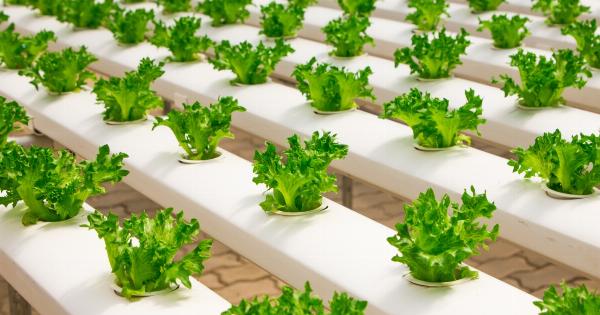Inflammation is a natural defense mechanism of our body to protect itself from harm and begin the healing process. However, when inflammation becomes chronic, it can lead to several health issues, including heart disease, arthritis, and even cancer.
Adopting an anti-inflammatory diet is one of the best ways to counter chronic inflammation, and incorporating an abundance of greens into your meals can be highly beneficial. These vibrant veggies contain powerful antioxidants, vitamins, minerals, and phytonutrients that help fight inflammation and promote overall health.
Read on to discover the top greens that can significantly reduce inflammation and learn how to incorporate them into your diet to maximize their benefits.
1. Leafy Greens: A Nutrient Powerhouse
Leafy greens like spinach, kale, Swiss chard, and collard greens are renowned for their exceptional nutrient profile.
Packed with antioxidants such as vitamins A, C, and E, these greens help neutralize harmful free radicals in the body and protect against inflammation. Additionally, they contain high levels of fiber and minerals like magnesium, which play a crucial role in reducing inflammation and promoting overall wellness.
Try incorporating leafy greens into your diet by preparing a refreshing salad with a variety of greens, mixed with some cherry tomatoes, cucumbers, and a drizzle of olive oil.
Sautéing them with garlic and a sprinkle of lemon juice makes for a simple yet delicious side dish. You can also blend them into your favorite smoothies, adding a handful of spinach or kale to further enhance their nutritional value.
2. Broccoli: A Cruciferous Champion
Broccoli, a member of the cruciferous vegetable family, is an excellent source of potent anti-inflammatory compounds.
It contains sulforaphane, a sulfur-rich compound that has been found to help fight inflammation and reduce the risk of chronic diseases like heart disease and cancer. Broccoli is also packed with vitamins K and C, which contribute to its anti-inflammatory properties.
Incorporate more of this inflammation-fighting veggie into your diet by roasting it with a drizzle of olive oil and a sprinkle of sea salt for a simple yet tasty side dish.
You can also add it to stir-fries or steam it lightly to retain its nutritional value. For a tangy twist, try broccoli florets in a zesty salad with a citrusy dressing.
3. Spinach: The Green Dynamo
Spinach is a nutritional powerhouse that boasts anti-inflammatory properties due to its high content of vitamins, minerals, and phytonutrients.
It is an excellent source of vitamin E, which is known for its anti-inflammatory effects and ability to protect cells from oxidative stress. The high levels of antioxidants found in spinach, such as lutein and zeaxanthin, contribute to reducing inflammation and promoting eye health.
There are countless ways to include spinach in your meals. You can sauté it with garlic and a sprinkle of nutmeg for a flavorful side dish, or toss a handful into your omelets or scrambled eggs.
Spinach also blends well into smoothies, giving you a convenient way to boost your daily greens intake.
4. Swiss Chard: A Rainbow of Nutrition
Swiss chard is a leafy green renowned for its vibrant colors and exceptional nutritional profile. It contains a wide range of antioxidants, including beta-carotene and flavonoids, which help combat inflammation and protect against chronic diseases.
Swiss chard is also rich in potassium, magnesium, and fiber, all of which contribute to its anti-inflammatory properties and overall health benefits.
Include Swiss chard in your diet by sautéing it with some onions and a splash of balsamic vinegar for a tasty side dish. You can also add it to soups, stews, or pasta dishes, adding both flavor and nutrients.
Steamed Swiss chard pairs well with grilled salmon or chicken, creating a nutritious and well-balanced meal.
5. Collard Greens: A Southern Delight
Collard greens are a popular staple in Southern cuisine and are known for their impressive health benefits.
These dark leafy greens are rich in vitamins K, A, and C, along with other essential nutrients that contribute to their anti-inflammatory properties. Collard greens also contain unique antioxidants, such as kaempferol and syringic acid, which provide additional protection against inflammation and chronic diseases.
Add a touch of the South to your meals by braising collard greens with some onions, garlic, and a dash of hot sauce.
You can also use collard green leaves as a nutritious wrap for your favorite sandwich fillings or stir them into hearty soups and stews for an extra dose of green goodness.
6. Arugula: The Peppery Green
Arugula, also known as rocket, is a peppery-flavored leafy green that adds a delightful taste to any dish. Along with its unique flavor, arugula offers a range of health benefits, including its ability to fight inflammation.
It is rich in phytochemicals like indole-3-carbinol, which has been found to possess anti-inflammatory properties. Arugula is also an excellent source of vitamins A, K, and C, along with calcium, magnesium, and potassium.
Include arugula in your diet by adding it to salads, sandwiches, or wraps for an extra kick of flavor and nutrition. You can also blend it into pesto sauce or use it as a topping for homemade pizzas to elevate their taste and health quotient.
7. Watercress: A Superfood Gem
Watercress is a lesser-known green that deserves a spot in your anti-inflammatory diet. Packed with vitamins A, C, and K, as well as calcium and antioxidants, watercress offers remarkable health benefits.
Studies have shown that watercress contains compounds like glucosinolates, which provide anti-inflammatory effects and help protect against chronic diseases.
Enjoy the crisp and slightly peppery flavor of watercress by adding it to salads or using it as a garnish for soups and stews.
Try blending it into a refreshing green smoothie or using it as a base for a nutrient-rich pesto sauce to enhance both flavor and health benefits.
8. Bok Choy: The Asian Green Delight
Bok choy, a member of the cabbage family, is a versatile green that offers impressive anti-inflammatory properties.
It contains unique compounds like glucosinolates and isothiocyanates, which have been linked to reducing inflammation and preventing the development of chronic diseases. Bok choy is also rich in vitamins C, E, and A, as well as calcium and potassium.
Incorporate bok choy into your meals by stir-frying it with garlic and ginger, or add it to your favorite Asian-inspired soups and noodle dishes.
Bok choy can also be enjoyed in salads or used as a nutrient-rich wrap for your favorite fillings, providing you with a delicious and anti-inflammatory meal.
9. Brussels Sprouts: Tiny and Mighty
Brussels sprouts may be small, but they are packed with potent anti-inflammatory compounds and numerous health benefits.
These miniature cabbages are rich in antioxidants, fiber, vitamins C and K, and essential minerals, all of which contribute to their anti-inflammatory properties. Brussels sprouts also contain glucosinolates, which have been shown to possess cancer-fighting properties and reduce inflammation.
To enhance the flavor of Brussels sprouts, roast them with a hint of balsamic vinegar and some dried cranberries. You can also shred them and incorporate them into salads, or steam them lightly and serve as a nutritious side dish.
Brussels sprouts are a versatile vegetable that can be enjoyed in various ways, so get creative and experiment with different cooking methods.
10. Green Peas: The Legume Superstar
Green peas, although technically a legume, share several similarities with leafy greens in terms of their nutrient profile.
These vibrant peas are rich in antioxidants, including flavonoids and carotenoids, which help fight inflammation and protect against chronic diseases. Green peas are also an excellent source of fiber, vitamins A and C, and minerals like zinc and copper, contributing to their overall health benefits.
Include green peas in your meals by adding them to stir-fries, soups, or salads. You can also mash them and use as a spread on whole-grain toast or blend them into creamy soups for added nutritional value.
Green peas are a versatile ingredient that can be incorporated into numerous dishes, making them an accessible choice for fighting inflammation.
By incorporating these ten inflammation-fighting greens into your diet, you can significantly improve your overall health and well-being.
Whether you prefer them in salads, sautés, smoothies, or soups, there are countless ways to enjoy these greens and reap their nutritional benefits. Embrace the power of greens and prioritize your health by making them a regular part of your meals.































